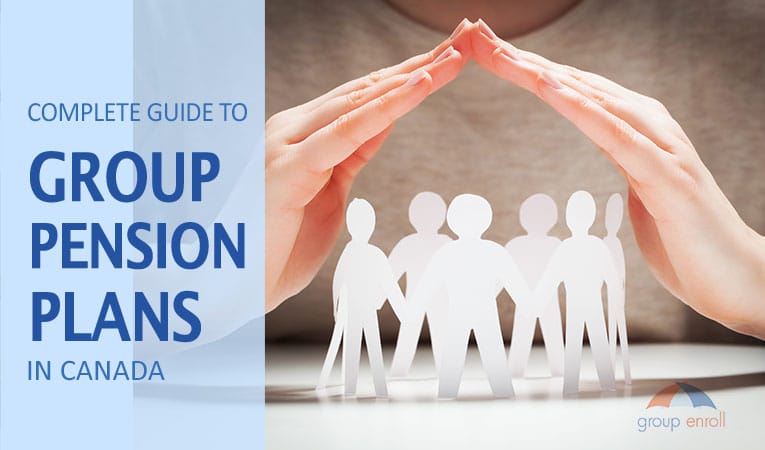Companies looking to improve diversity and inclusion must understand examples of microaggressions in the workplace and how to reduce them. What is microaggression in the workplace, and how does it hurt organizations? What can you do to educate your employees about it?
Below, our team at Group Enroll answers these questions with in-depth definitions and explanations to help you reduce microaggressions in your company.
Table of Contents
Defining Microaggression
Microaggressions are words, actions, and environments that convey primarily negative stereotypical viewpoints towards and about marginalized and minority individuals and groups.
Microaggressions are typically unintentional but have a significantly damaging effect on the recipient. In some cases, the person committing the microaggression may even attempt to be complimentary, but that doesn’t excuse them from learning that their words or actions may be perceived as more harmful than kind.
This type of behaviour and environment results from implicit biases that can be difficult to recognize due to the unconscious nature of this form of prejudice, often by white colleagues of people of colour. People develop these biases due to exposure to direct and indirect social cues, messages, and other variables over their lifetime.
While the term includes the word micro, that doesn’t mean this behaviour, attitude, or environment is a minor problem. Those who experience microaggression often share that these instances occur multiple times every day of their lives, and the negative impact becomes exponential.
Keep reading to learn more about the different types of microaggressions and see examples from the workplace.
Types of Microaggressions
These definitions and examples of microaggressions in the workplace will help you understand how individuals might automatically or unintentionally express implicit biases toward marginalized and minority groups.
Verbal Microaggression
Verbal microaggression occurs when someone says or implies a disrespectful or offensive notion about another person’s identity or status. These instances of verbal microaggression differ from explicitly racist comments and jokes in that they may initially sound like a compliment.
Behavioural Microaggression
Behavioural microaggressions are dismissive and insensitive actions rooted in one or more biases against someone’s status or identity.
Environmental Microaggression
Environments can present implicit biases and microaggressions just as much as people can. Environmental microaggressions are invalidating and intimidating to a person’s identity or status.
Examples of Microaggressions in the Workplace
Explore these scenarios to understand better how microaggression can present in the workplace for different minority and marginalized groups. While it isn’t a comprehensive list, it aims to help you understand how microaggressions can hide in plain sight.
It is essential to understand that companies must work with and actively listen to employees reporting microaggressions in the workplace. The list below is not a simple guideline to follow to form policies; it only shares some potential circumstances in which microaggression occurs.
Age
- Assuming technological capabilities
- Inferring that someone is too young or too old for their work position
Gender Identity
- Refusing to use a coworker’s preferred pronouns
- Telling a coworker that they don’t look or act stereotypically for their identity
Physical or Mental Disability
- Failing to ensure accessibility to employees at all work-related locations and buildings
- Saying things like, “The way you overcome your disability to perform the work you do here is inspiring to me as a white person!”
Race or Nationality
- Shrinking away physically or hiding personal items in front of people of colour or minorities while leaning into the space of or leaving things out around colleagues of your own race or ethnicity
- Assuming a fellow employee of colour wasn’t born in Canada and asking, “Where are you really from?”
Religious Beliefs
- Failing to consider an employee’s religious or cultural holiday by scheduling work on that day
- Asking invasive questions about religious or cultural customs and concepts
Sexual Orientation
- Saying that a gay coworker doesn’t act or look gay
- Sharing that someone identifies as LGBTQIA+ without their explicit consent (“outing” them)
Socio Economic and Financial Status
- Commenting on the value of another person’s work clothing or accessories
- Assuming coworkers or employees can afford more costly activities and expenditures
Negative Organizational Impact of Microaggressions in the Workplace
While one might assume that because microaggressions are more subtle than explicit bias and overt discrimination, it’s essential to remember that subtle discrimination is just as damaging as more blatant discrimination and can contribute to people experiencing the following:
- Higher stress levels
- Increases in anxiety
- Deeper depressions
- Decreases in productivity
- Complete physical or mental burnout
Workplaces experiencing microaggression are unwittingly contributing to the invalidation of their employees’ sense of self-worth or perpetuating an exclusionary culture. This work culture will reduce a company’s or organization’s talent pool and negatively impact business functionality and profit lines.
Addressing Examples of Microaggression in the Workplace
Addressing microaggression in the workplace requires more than a simple one-size-fits-all policy. Your employees will need the training to understand better the internalized human phenomenon of bias that damages those around them who identify with a marginalized or minority group.
Companies should also do in-depth research without depending on employees who identify with marginalized or minority groups to teach their employers and coworkers how to respect them. That expectation is laden with emotional labour that connects to the traumas that microaggressions inherently cause.
Explore the following tips to learn about the resources and training your company needs to implement to reduce microaggression in the workplace.
Learn to Recognize Implicit Bias and Be Open to Accountability
Because implicit and unconscious biases are the primary cause of microaggression, they can be challenging to recognize — even with strong introspective skills. To better identify these biases, you can implement implicit association tests to discover them.
It may be uncomfortable to realize that your employees—or even you, yourself—hold implicit biases about minority and marginalized groups. Still, it is the first step in making an educated improvement for your entire business.
Prepare to hold yourself and your employees accountable for the way you and they speak and act and how your company environment contributes to microaggressions. A good leader will pave the way for the rest of the company.
Commit to Bias Training
Bias training should encompass educational materials that help individuals understand implicit bias, how it negatively impacts individuals, and how to act on the new awareness of biases. The concepts in training may include the following:
- Becoming aware of internalized, unconscious biases through education
- Understanding how damaging words, actions, and environments can be to others
- Learning to recognize microaggressive comments, behaviours, and environments in oneself and in others
- Apologizing for previous microaggressions privately and respectfully by simultaneously acknowledging the person’s pain, reflecting on the inflicted offence, and working to eliminate biased words and actions from future interactions
Learn About Marginalized and Minority Groups
Take proactive steps to learn more about minority and marginalized groups. Try to understand the experiences of those who are different from you. While you can’t truly take a walk in their shoes, you can generally hypothesize how the same microaggressions would harmfully affect you.
You might assume it is easiest to go to a familiar person who identifies with a group that experiences microaggressions or overt discrimination, but you shouldn’t. However, if someone volunteers to share their experiences and perspectives, listening and learning from that interaction is critical.
Support a Safe Environment
Company leaders should set an example for their employees and provide a safe work environment that simultaneously encourages personal and professional growth. Individuals should not fear judgment or ridicule in the workplace for being authentic.
Employers should encourage honest communication, active listening skills, and empathy among their employees. It is also essential to notice if anyone isn’t speaking up or if someone is trying to keep another person silent, as these situations may require varying levels of intervention.
Remember that some employees may require different forms of communication to join in on this collaborative environment, and be sure to make the necessary accommodations available to help improve the workplace.
Enforce a Process to Eliminate Microaggressions
Companies need to have reliable processes to eliminate microaggressions and discriminative environments in their workplaces. Consider looking into policies and programs that will assist your company in educating your employees about bias and enforce consequences for failing to apply the new skills in their workplace.
Provide Mental Health Support Services
Companies can use their resources to invest in programs and group benefits that support mental health services. Consider implementing the following support services to benefit your employees and develop your company into an inclusive workplace:
- Employee assistance programs – Provide one or more free evaluations to refer the employee to the best applicable resources to meet their particular needs
- Mental health service coverage – Reduce the employee’s financial burden of seeking out mental health services to help them achieve personal and work-related goals
- Additional health and dental options – Assist those with lower income in gaining access to necessary medical and dental options that are otherwise out of reach
These examples of microaggressions in the workplace are just a tiny portion of what could be happening in your company culture. We hope these eye-opening examples of microaggressions in the workplace are helpful as you develop a welcoming and inclusive workplace for every employee. You are on the right path by taking the first step in researching how to reduce implicit bias and microaggression.
5 Effective Workplace Strategies to Boost Mental Health
Find out how to maintain a healthy work-life balance for your employees.
Group Enroll: Group Benefits Plans
Is your company looking for group insurance products with the help of a broker?
Thankfully, plenty of affordable options are available for you to explore and implement in your company to help your employees. Insurdinary and Group Enroll provide quotes for group insurance and more. Health Rates also offers a database of numerous group benefit services that you can compare. Fill out the quote form at Group Enroll to compare rates today.








